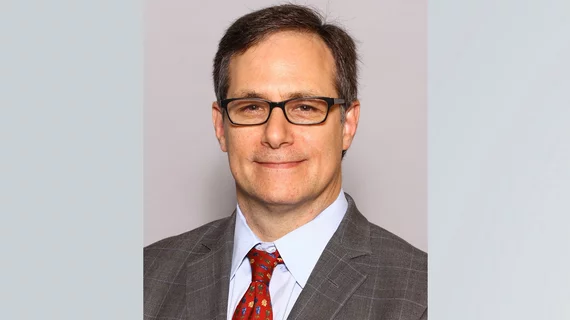Q&A: Stephen D. Brown on the prospect of radiologists disclosing errors to patients
As health systems and medical societies continue to emphasize value-based care, the day may come when radiologists are expected to disclose medical errors and even apologize directly to patients.
Stephen D. Brown, MD, department of radiology at Boston Children’s Hospital and Harvard Medical School, and colleagues explored this topic at length in a recent commentary published in Radiology.
“Strong cultural currents are driving radiologists inexorably toward situations where we will be required to disclose our errors to patients,” Brown et al. wrote. “This requirement will likely intensify as more systems establish broad initiatives around disclosure and apology and as legislative and procedural barriers are remedied.
Radiology Business spoke with Brown about his team’s observations and how he thinks radiologists will respond if asked to communicate errors to patients. The full conversation is provided below:
RB: The disclosure of errors to patients is starting to become a more popular topic across a wide range of healthcare specialties, including radiology. What led to this shift?
Brown: Well, the ethical rationale for disclosing errors to patients has been around for a long time, but movement toward direct disclosures and apologies didn’t really gain a lot of traction until more recently. One thing that has helped this topic spread in healthcare has been the emergence of the quality and safety movement over the past 10 to 20 years. There’s a strong feeling within that movement that open and honest communication with patients and families about errors is key to making systems safer.
Another thing is the general feeling that the current tort system in the United States is seriously flawed. The “deny and defend” approach to these kinds of errors does not allow systems to process events properly or leaders to discuss these events in a healthy way. It also creates an adversarial climate that undermines provider-patient relationships. And there has been a general sentiment—though not universally accepted—that it is not negligence that leads to most lawsuits; it’s a lack of transparency, empathy and communication.
Where do professional imaging societies such as the American College of Radiology and RSNA stand on this topic?
Error disclosure as a professional obligation is embedded in many of these groups’ bylaws, but it has not been strongly promoted as a priority. What has been espoused by professional groups has been patient-centered care and actions surrounding quality and safety. What we were saying in our analysis was that open, honest communication with patients about errors and adverse events is a natural extension of the priorities already held by these societies.
So the professional societies have vocalized quality, safety and patient-centered care as priorities, but error disclosure to patients has not yet risen to the surface in terms of public articulation.
Do radiologists look forward to being more involved in disclosing errors to patients? Or will they resist the shift until they are specifically required to do so? What about physicians who aren’t radiologists?
Radiologists are still worried about disclosing errors, and I think there are also probably nonradiologists who are worried about radiologists talking directly to patients about errors.
I do believe there are radiologists who, if they feel confident their institution and risk management mechanisms have their back, would look forward to having honest and open communication with their patients. Speaking with patients after an error can bring with it a sense of closure or resolution, and even healing. If radiologists don’t feel they have the backing of their institution and the proper training on how to do it, however, they are going to dread this idea.
Many health systems are developing communication and resolution programs (CRPs) to help them prepare for these types of situations. What is the importance of these programs? What makes an effective CRP?
It’s important to understand that, given the legal climate in the United States, error disclosure outside of the context of CRPs is still highly contentious. Where things are coalescing that this is the optimal course of action is in the context of a CRP, where institutional risk management policies are well aligned with the communication process. And if the conversation that occurs is not tied to a CRP, with an offer of compensation in place when appropriate, then it may not be as successful.
There are some key elements to an effective CRP. First, the CRP system must recognize that clinicians involved in these events face significant emotional repercussions. Processes must be in place for these clinicians to get the support they need. Patients, of course, need support mechanisms in place as well. Clinicians must also receive specific training and coaching before they enter into a conversation with patients and families.
There are several good resources available for health systems looking to implement a CRP. Some of those resources include the Massachusetts Alliance for Communication and Resolution following Medical Injury, the Collaborative for Accountability and Improvement and the Agency for Healthcare Research and Quality’s CANDOR toolkit. For communication training, there’s the Institute for Professionalism and Ethical Practice, the institute I direct.
For more on this topic: Radiology Business covered the original commentary from Brown and colleagues back in August.

